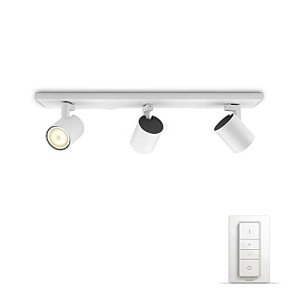15 Facts Your Boss Wishes You Knew About Traditional Lighting UK
Traditional Lighting in the UK: A Comprehensive Overview
Traditional lighting holds a cherished location in the homes and public spaces of the United Kingdom. With its ability to stimulate fond memories, charm, and heat, traditional lighting fixtures offer not just visual appeal however also practical worth. This short article explores the different kinds of traditional lighting typical in the UK, their history and development, popular styles, and how to include them into modern decoration.
A Historical Perspective on Traditional Lighting
The advancement of lighting in the UK has actually been extensive. From the flickering flames of candles and oil lamps to the introduction of gas and electric lights, the journey is as interesting as it is informing.
Key Milestones in Lighting History:
- Candles (Before 1800s): The earliest kind of synthetic light, using tallow or beeswax.
- Oil Lamps (Late 18th Century): These ended up being popular in homes and theaters, supplying brighter lighting than candle lights.
- Gas Lighting (Early 19th Century): Revolutionized public and street lighting before electrical power took precedence.
- Electric Lighting (Late 19th Century): Marked the transition to modernity, with incandescent bulbs slowly changing older forms.
Each of these developments led the way for traditional lighting, which still includes ancient methods into contemporary styles.
Types of Traditional Lighting
Traditional lighting can be classified into several unique types, each with its distinct characteristics.
1. Chandeliers
Chandeliers are frequently the centerpiece of a room. They come in various styles, from ornate Victorian styles to basic, rustic models.
Popular Features:
- Crystal decorations
- Iron framework
- Various bulb types
2. Wall Sconces
Wall sconces supply both creative flair and soft lighting. They can be used in hallways, living rooms, or bathrooms, enhancing the environment of a space.
Typical Styles:
- Candle-style sconces
- Brass or iron fixtures
- Vintage-inspired styles
3. Table Lamps
Table lamps embody the versatility of traditional lighting as they can suit any room. Varying from basic designs to elaborate pieces, they are ideal for reading nooks, side tables, or desks.
4. Floor Lamps
Similar to table lamps in design and function, floor lamps can produce comfortable corners in a home. Vintage designs typically consist of tripod bases or elaborate patterns.
5. Lanterns
Though frequently connected with outdoor settings, traditional lanterns can also be utilized indoors for a rustic touch. They come in various materials consisting of wood and metal.
Integrating Traditional Lighting into Modern Decor
In a world increasingly leaning towards minimalism and modern designs, traditional lighting still holds its ground. The key is to maintain a balance. Here are some ideas for incorporating traditional lighting into a contemporary home:
1. Mix Styles
Combine traditional lighting with modern furniture to develop a diverse room. For instance, a vintage chandelier can be hung above a sleek table.
2. Use Dimmer Switches
To manage the atmosphere, install dimmer switches that enable soft lighting, which matches both traditional and modern interiors.
3. Choose Mixed Materials
Select lighting fixtures that integrate different products, such as a wooden lamp with a metal or glass base, to bridge the space in between old and brand-new.
4. Highlight Architectural Features
Use traditional fixtures to highlight distinct architectural functions in your home. For example, hanging a vintage lantern in a hallway with exposed brick enhances its rustic appeal.
5. Include Natural Elements
Pick designs that integrate natural materials such as wood or wrought iron. These aspects tend to mix well with modern decor while retaining a traditional flair.
Table: Comparison of Traditional Lighting Types
Lighting Type
Description
Common Materials
Normal Settings
Chandeliers
Decorative ceiling fixtures, frequently elaborate
Crystal, metal
Dining spaces, ballrooms
Wall Sconces
Mounted fixtures that supply ambient light
Brass, iron
Hallways, living spaces
Table Lamps
Portable lamps for tables and desks
Glass, ceramic
Bed rooms, workplaces
Floor Lamps
Standalone lamps for corner lighting
Wood, metal
Living spaces, dens
Lanterns
Rustic or vintage lights
Wood, metal
Patios, gardens
Often Asked Questions
1. What is traditional lighting?
Response: Traditional lighting describes lighting fixtures that embody historical or classic styles, frequently defined by the usage of elaborate products, detailed patterns, and a warm visual.
2. How can I maintain traditional lighting fixtures?
Response: Regular cleaning and occasional deep cleansing are vital. For fixtures with glass or crystals, utilize a moderate glass cleaner. For metal parts, ensure you use suitable cleansing services that won't damage the finish.
3. Are traditional lighting fixtures energy-efficient?
Answer: Many traditional fixtures can accommodate modern LED bulbs, which use better energy efficiency. Constantly check compatibility when switching to LED alternatives.
4. Can page mix traditional lighting with modern design?
Answer: Yes, blending traditional lighting with modern décor can create a distinctively welcoming space. Balance is crucial; opt for complementary styles to preserve visual consistency.
5. What is the finest method to pick traditional lighting for my home?
Answer: Consider your home's overall design, the function of the space, and individual taste. Take measurements to guarantee appropriate sizing and choose materials and colors that harmonize with existing decoration.
Traditional lighting serves as a long-lasting link to history, workmanship, and aesthetic appeals, showing that ageless styles have their rightful place, even amidst developing trends. Understanding view it now of traditional lighting and their application can assist property owners develop welcoming spaces that show both elegance and warmth, effortlessly mixing the past with today.
